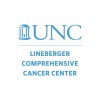Combination Chemotherapy, Bev, RT, and Erlotinib in Treating Patients With Stage III Non-Small Cell Lung Cancer
Lung Cancer

About this trial
This is an interventional treatment trial for Lung Cancer focused on measuring stage IIIA non-small cell lung cancer, stage IIIB non-small cell lung cancer, recurrent non-small cell lung cancer, squamous cell lung cancer
Eligibility Criteria
DISEASE CHARACTERISTICS: Diagnosis of non-small cell lung cancer Stage IIIA or IIIB disease No malignant pleural or pericardial effusions No palpable supraclavicular adenopathy Squamous cell histology allowed provided there is no hemoptysis and no central invasive lesions that abut or invade major blood vessels in the chest (with or without cavitation) Considered suitable and appropriate for combined modality therapy and thoracic conformal radiotherapy, as determined by the treating medical and radiation oncologist PATIENT CHARACTERISTICS: Eastern Cooperative Oncology Group (ECOG) performance status 0-1 Hemoglobin ≥ 9.0 mg/dL Platelet count ≥ 100,000/mm³ Absolute neutrophil count (ANC) ≥ 1,500/mm³ Forced expiratory volume 1 (FEV_1) ≥ 1 L Creatinine ≤ 1.5 times upper limit of normal (ULN) Aspartate Aminotransferase (AST) or Alanine Aminotransferase (ALT) ≤ 2.5 times ULN Bilirubin normal Partial thromboplastin time (PTT) and international normalized ratio (INR) normal Urine protein:creatinine ratio < 1.0 Blood pressure ≤ 150/100 mm Hg on 3 separate occasions Not pregnant or nursing Negative pregnancy test Fertile patients must use effective contraception No significant recent hemoptysis (> ½ teaspoon of bright red blood) No unstable angina No New York Heart Association (NYHA) congestive heart failure ≥ class II No myocardial infarction or stroke within the past 6 months No clinically significant peripheral vascular disease No evidence of bleeding diathesis or coagulopathy No abdominal fistula, gastrointestinal perforation, or intra-abdominal abscess within the past 6 months No serious, non-healing wound, ulcer, or bone fracture No thrombosis requiring therapeutic anticoagulation No significant traumatic injury within the last 28 days PRIOR CONCURRENT THERAPY: Recovered from prior surgery At least 4 weeks since prior and no concurrent participation in another experimental drug study At least 4 weeks since prior and no concurrent major surgical procedure or open biopsy At least 2 weeks since prior mediastinoscopy or mediastinotomy At least 1 week since prior fine needle aspirations or core biopsies No other concurrent antineoplastic or antitumor agents, including chemotherapy, radiotherapy, immunotherapy, or hormonal anticancer therapy No other concurrent investigational agents
Sites / Locations
- Lineberger Comprehensive Cancer Center at University of North Carolina - Chapel Hill
- Batte Cancer Center at Northeast Medical Center
- Wake Forest University Comprehensive Cancer Center
Arms of the Study
Arm 1
Arm 2
Arm 3
Arm 4
Experimental
Experimental
Experimental
Experimental
Cohort 1
Cohort 2
Cohort 3
Phase II
Bevacizumab 10 mg + Chemoradiotherapy (carboplatin, paclitaxel, and 3-dimensional conformal radiation therapy)
Bevacizumab 10 mg + Erlotinib 100 mg + Chemoradiotherapy (carboplatin, paclitaxel, and 3-dimensional conformal radiation therapy)
Bevacizumab + Erlotinib 150 mg + Chemoradiotherapy (carboplatin, paclitaxel, and 3-dimensional conformal radiation therapy)
Bevacizumab + Erlotinib 100 mg + Chemoradiotherapy (carboplatin, paclitaxel, and 3-dimensional conformal radiation therapy)
Outcomes
Primary Outcome Measures
Secondary Outcome Measures
Full Information
1. Study Identification
2. Study Status
3. Sponsor/Collaborators
4. Oversight
5. Study Description
6. Conditions and Keywords
7. Study Design
8. Arms, Groups, and Interventions
10. Eligibility
12. IPD Sharing Statement
Learn more about this trial
